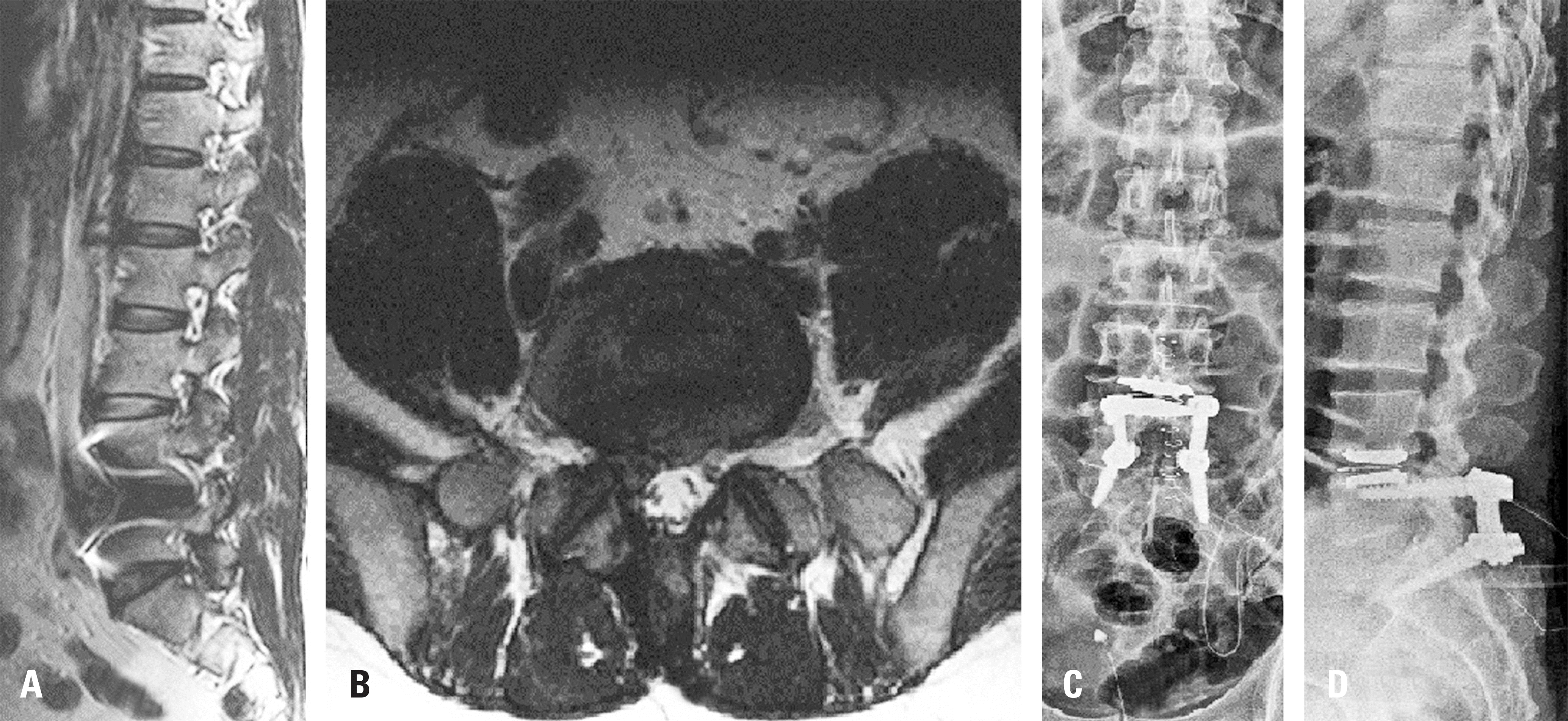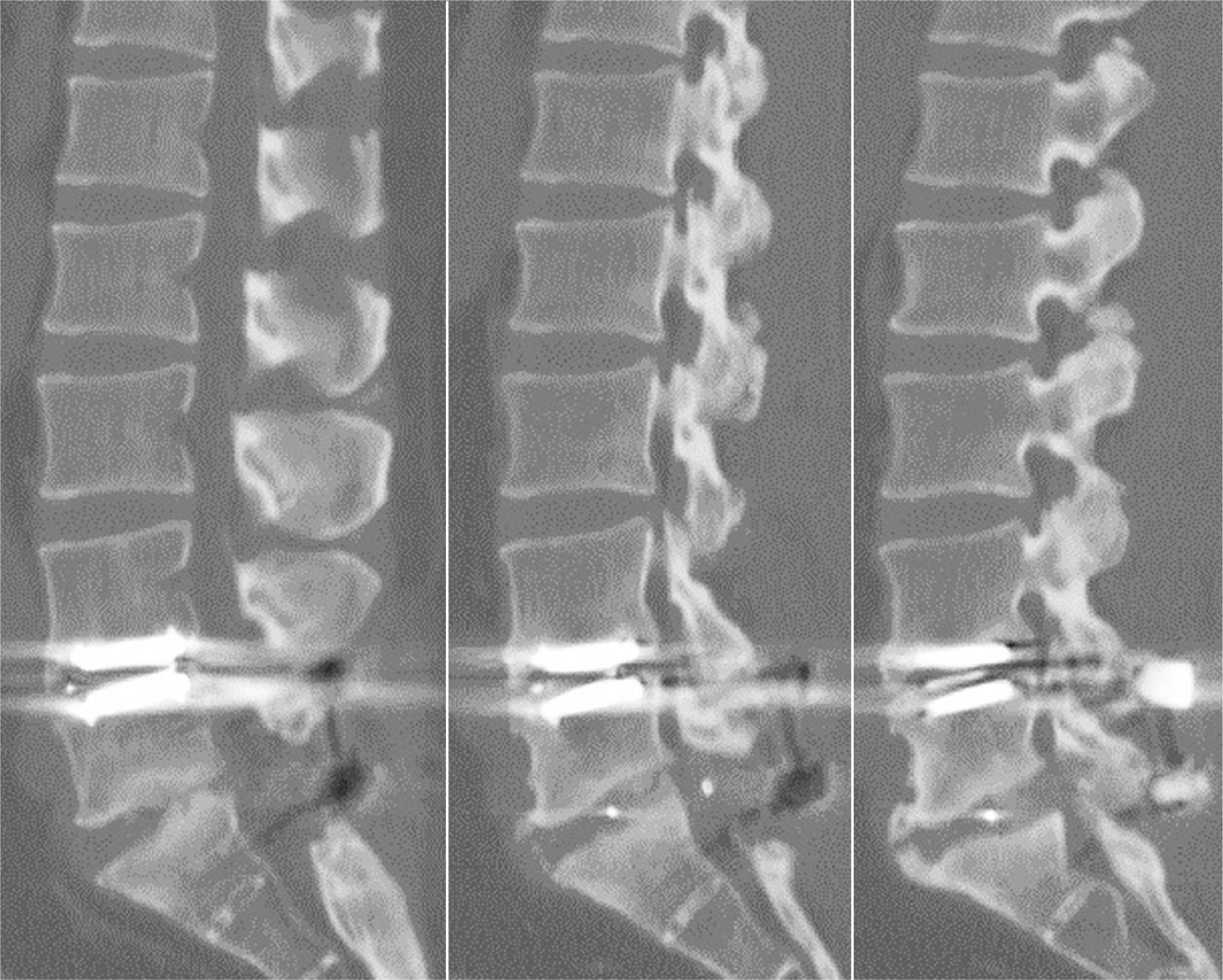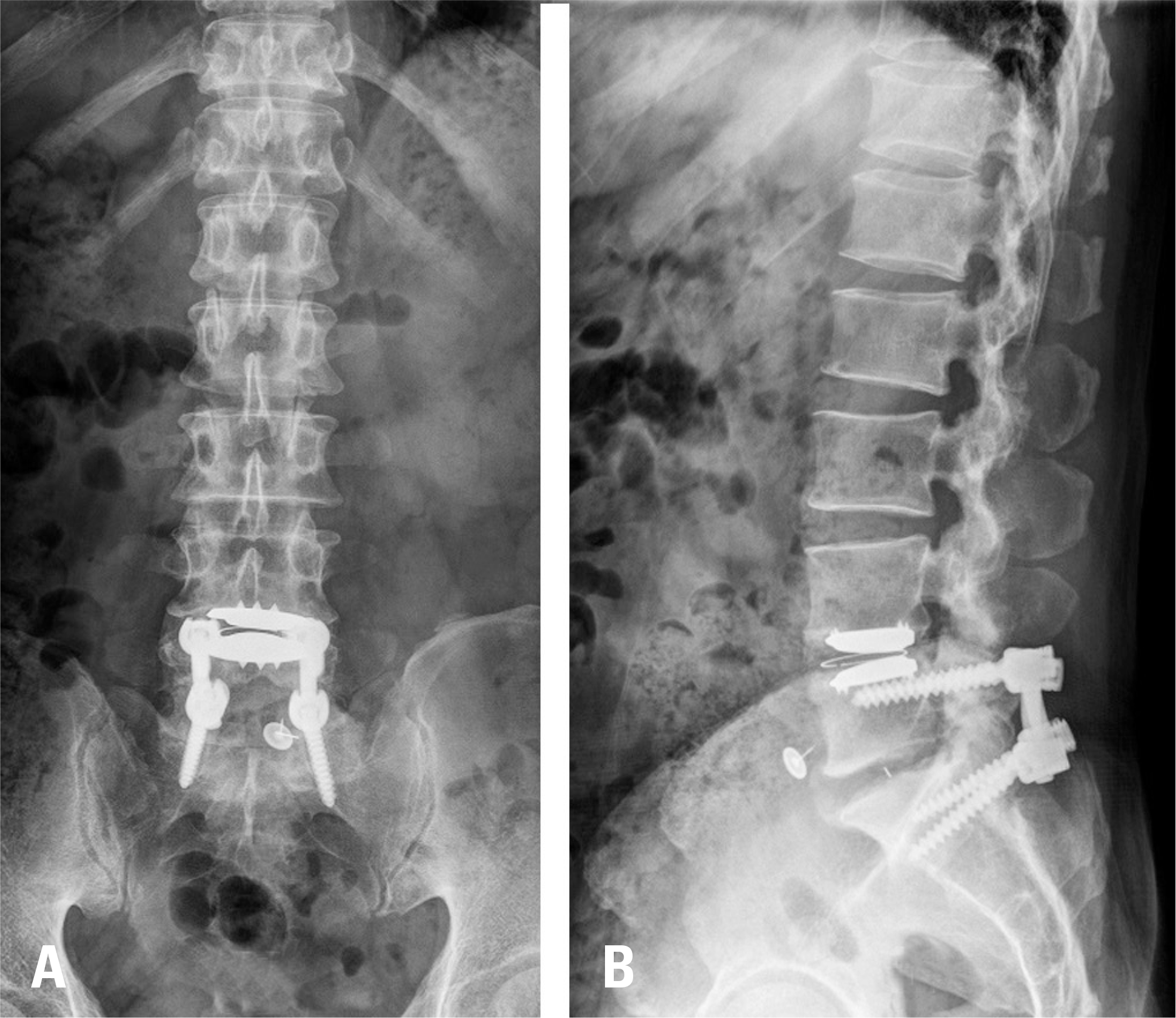Abstract
Objectives
To report a rare case in which a tack was used to control bleeding due to a torn iliac vein during revisional anterior spine surgery.
Summary of Literature Review
During anterior lumbar surgery, bleeding following a vascular injury is possible to control and reparable in most cases. During revisional anterior lumbar surgery, however, there are irreparable cases of bleeding as well. In some cases, it can threaten the patient's life.
Material and Methods
A 56-year-old man suffered from potentially fatal bleeding following iliac vein rupture during revisional anterior lumbar surgery. Primary vascular closure was impossible due to severe adhesion. We attempted to stop the venous bleeding with a tack, as an alternative treatment. The potentially fatal bleeding was controlled and the patient's vital signs stabilized after hemostasis by the tack.
REFERENCES
1. Brau SA, Delamarter RB, Schiffman ML, et al. Vascular injury during anterior lumbar surgery. Spine (Phila Pa 1976). 2004; 4:409–12.
2. Oskouian RJ, Johnson JP. Vascular complications in anterior thoracolumbar spinal reconstruction. J Neurosurg. 2002; 96:1–5.

3. Nguyen HV, Akbarnia BA, van Dam BE, et al. Anterior exposure of the spine for removal of lumbar interbody de-vices and implants. Spine (Phila Pa 1976). 2006; 31:2449–53.

4. Flouzat-Lachaniette CH, Delblond W, Poignard A, et al. Analysis of intraoperative difficulties and management of operative complications in revision anterior exposure of the lumbar spine: a report of 25 consecutive cases. Eur Spine J. 2013; 22:766–74.

5. Patel AA, Brodke DS, Pimenta L, et al. Revision strategies in lumbar total disc arthroplasty. Spine (Phila Pa 1976). 2008; 33:1276–83.

6. Schwender JD, Casnellie MT, Perra JH, et al. Perioperative complications in revision anterior lumbar spine surgery: incidence and risk factors. Spine (Phila Pa 1976). 2009; 34:87–90.
7. Silvestre C, Mac-Thiong JM, Hilmi R, et al. Complications and morbidities of mini-open anterior retroperitoneal lumbar interbody fusion: Oblique lumbar interbody fusion in 179 patients. Asian Spine J. 2012; 6:89–97.

8. Chiriano J, Abou-Zamzam AM Jr, Urayeneza O, et al. The role of the vascular surgeon in anterior retroperitoneal spine exposure: preservation of open surgical training. J Vasc Surg. 2009; 50:148–51.

Fig. 1.
(A) A sagittal image of the lumbar spine and (B) an axial image at L5-S1 show a left herniated disc in preoperative magnetic resonance imaging. (C) Coronal images and (D) sagittal images show decompressed lamina and posterior interbody fusion in postoperative imaging.

Fig. 2.
(A) A coronal image, (B) a sagittal image, (C) an extension image, and (D) a flexion image show a displaced cage and non-fused findings at the L5-S1 level 1 year after the operation.

Fig. 3.
A sagittal image of the lumbar spine shows a displaced cage and non-fused findings at the L5-S1 level in computed tomography.





 PDF
PDF ePub
ePub Citation
Citation Print
Print




 XML Download
XML Download